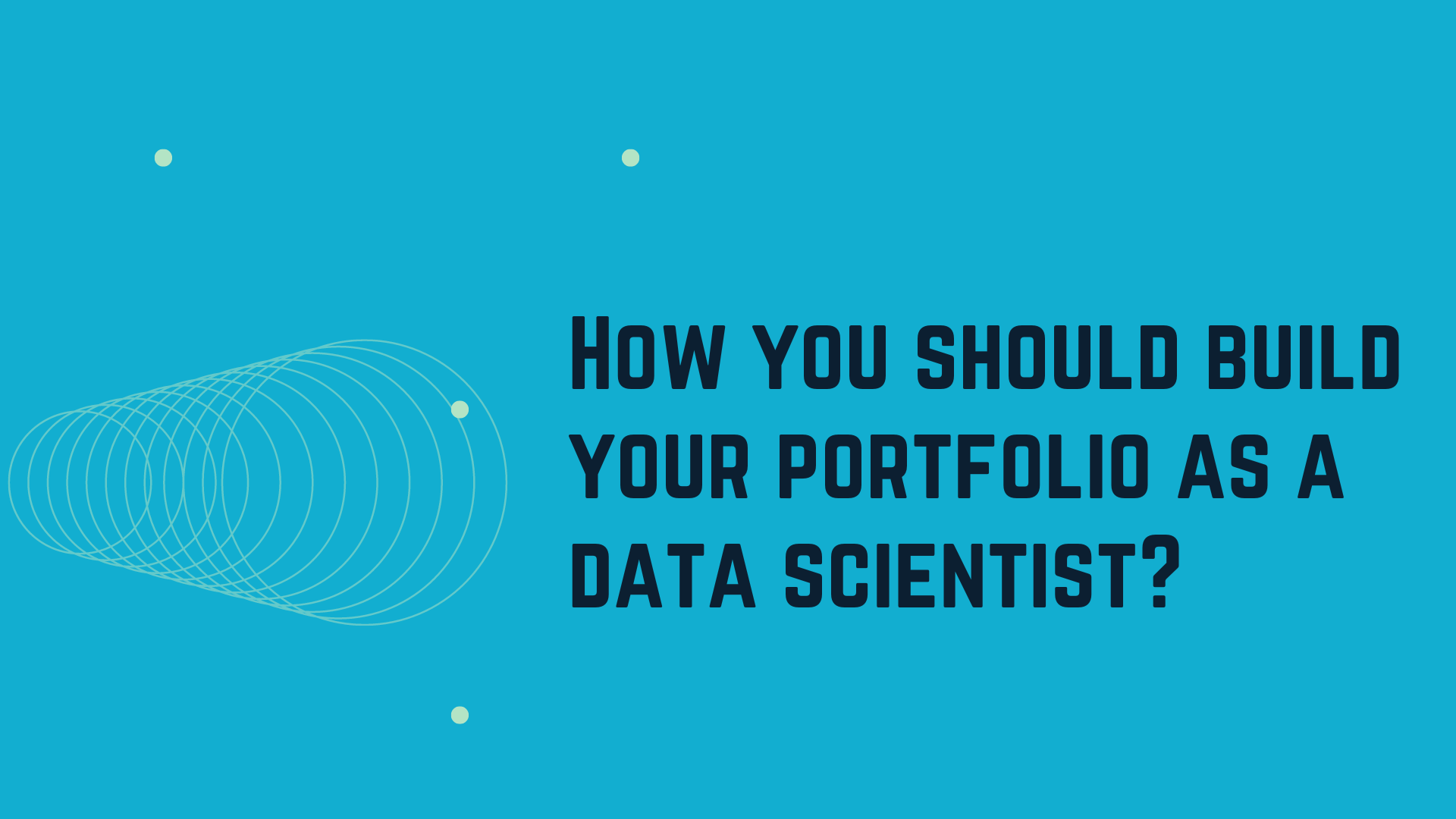December 3, 2022
How you should build your portfolio as a data scientist?
December 3, 2022
How you should build your portfolio as a data scientist?

December 3, 2022

As a data scientist, having a portfolio is one of the most important things you should do. That is necessary for you to showcase your talent and skills. But is sometimes neglected by new data scientists. Here we will discuss the main reason you should invest in a portfolio and how you should set up your portfolio to showcase your skills perfectly as a data scientist.
Software development and content writing, … unlike data science, are expressive skills. Which means you can easily share your work as a software engineer. Mainly because the product you are working on is hosted online or available for testing to others. but unfortunately for data scientists, the outcome of their work is extremely abstract and highly depends on a vast amount of parameters to be understood.
For example, if you design a model to predict stock prices, the only way to test that model is to integrate it into a complete application. The same applies to dashboards created by data scientists. They need to be presented and explained in other to be understood by everyone. You, as a data scientist, thus need a way to showcase your work without being there to explain each line. And that is the whole reason why you may need a portfolio. Showcasing your work without explaining your finding to the audience trying to hire you or visiting your work.
As you can remark as a data analyst, for example, if you publish one of your notebooks with just the graphs, or maybe your tableau dashboard with all the interactive graphs, you may think it is enough, and you don’t need something else. But that is not true. The fact is that when you finish your presentation or dashboard, you have to document it, create a presentation out of it and present it to the executive team. The same applies to all the work you publish online. You don’t just need to push some files to your GitHub or host your dashboard. You need to explain it. And one of the best places to do that is on a portfolio.
People visiting your LinkedIn profile or contacting you for opportunities are non-technical people. It could be for a freelance job, full-time position or short-term employment. In any case, always consider that your audience is non-technical and does not understand the code or the technical terms. They only care about “Are you able to solve their problem?” “Can you help them increase their sales or launch on a new market?”, …. With that in mind, if you think of a perfect place where you are free to explain your ideas, projects, opinions, graphs, add presentations, and images, … you can come up with only one thing: A website. And that website, in our case, is your portfolio.
You need a portfolio describing what you did, the product you built, and the problems you solved… So how do you present that and where?
There are dozens of tools out there dedicated to portfolio building and management. But let’s first describe how a good portfolio must be organised before talking about the possibilities you have.
The best way to solve someone’s problems is to build with him in mind. This sentence applies to portfolios also. When building a portfolio, you must ask yourself, for whom am I building that? What does the person know, what could be his problems, do this presentation address those problems?
Unfortunately, 90% of the portfolio of data scientists are built like general portfolios: By showing the final products without any process or explanations.

That is the DON’T. When you visit these graphs, you have no information about the author’s process or how the data was collected, cleaned and stored. why some metrics have been chosen? Which problem is being addressed here, and how did he solve that problem?
One of good example I have is the portfolio of Claudia Ten Hoope (https://www.claudiatenhoope.com/data-analysis/), which is much more explicit, with more explanations and a detailed process. As a recruiter, you can understand how the person proceeds to get the graphs. And that skill is valuable for data scientists and data analysts.

So the takeover is:
Portfolio tools are extremely huge. But for data scientist and their need, it end up being just a few valuable tools:
WordPress

It is considered one of the best solutions because of its flexibility. With their powerful editor, you can embed almost everything. Giving you the power to write, describe everything and import your graphs as images.
Squarespace

https://www.squarespace.com/websites/create-a-portfolio
It is an exciting website builder offering website tools for everyone to build a website with no code. The main difference with WordPress is that it is not free, not open source, and is not as flexible as WordPress can be.
Webflow

Webflow is a powerful editor for creative minds that can help to create complex designs with no code. It integrates content management tools that could help you craft your ideas quickly and present your results as a data scientist.
The only limitation all the tools presented before has is they lack integration for data science tools, like the possibility to import your notebook directly and edit it as a project on your portfolio or dragging and dropping your dashboard to add more explanations about the results.

Here at ulife, we saw that problem and thought about a solution that could perfectly fit data scientists. A solution where you could freely express your ideas in a simple, sociable and straightforward manner. We are building saturn to help data scientists create a stonishing portfolio easily and faster. It could integrate tools like:
If this excites you, follow this link and be ready to try it out.
See you in the next story.